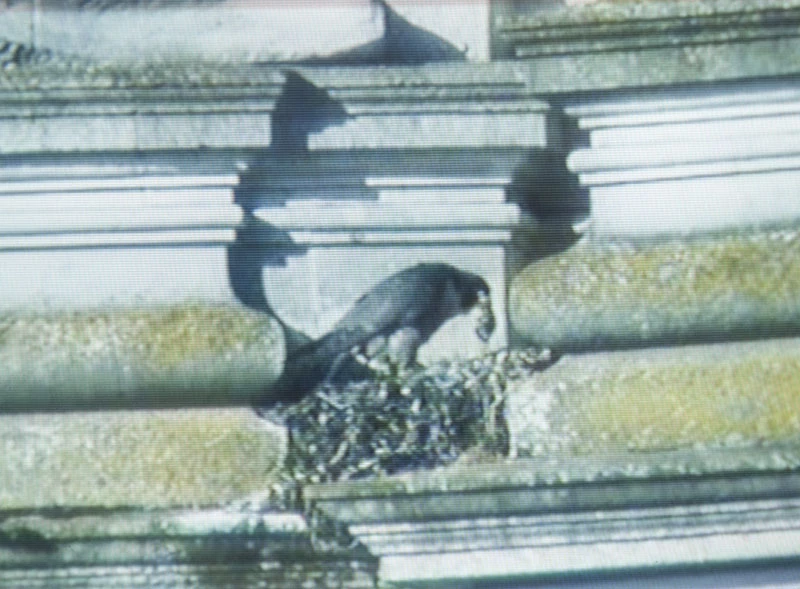Peregrines on the Clock Tower 2013
, 29 May 2013
May 29 update
Well the chicks are now about a month old and the change in the last 10 days or so has been dramatic. The pictures show them at about 20 days and then a mere 8 days later, changing from fluffy white balls to something resembling a Peregrine.
If all 3 chicks fledge - possibly a big if given the knack they have of falling off the tower before they can fly properly - this will be a very good year. Well, I suppose it is anyway as the adults wil have raised 3 chicks to fledging age, just that the nest site isn't particularly safe for youngsters!
Judging by the size of the young it looks like there may be one female and 2 males. At one month the difference in size between the sexes is apparent even from a distance.
The next 2-3 weeks will be very challenging for the youngsters, I hope they manage to stay on the tower!




